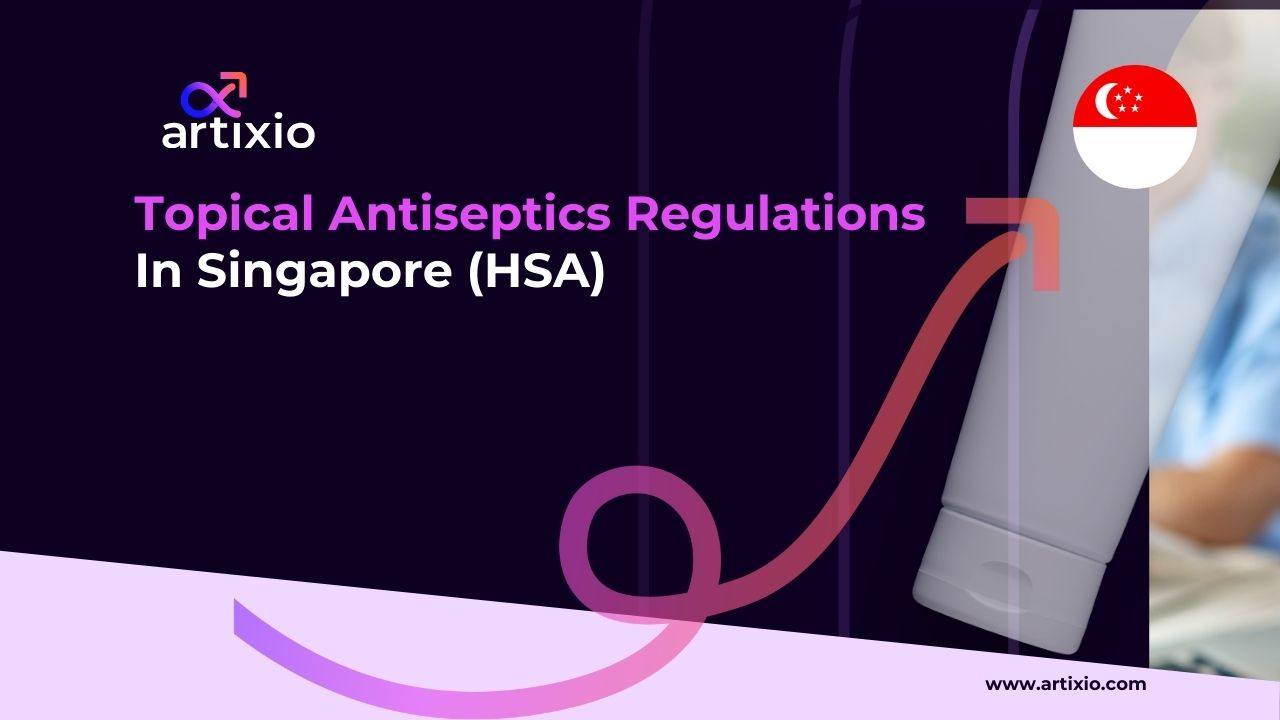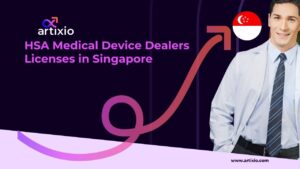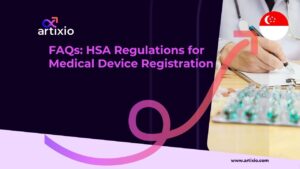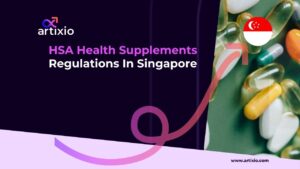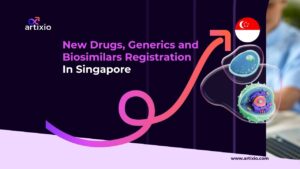Antiseptics are essential tools in maintaining hygiene and preventing infections, both in everyday life and healthcare settings. In Singapore, the regulation of antiseptics is governed by a robust framework designed to ensure their safety and efficacy. This blog delves into the regulatory landscape for antiseptics in Singapore, highlighting key aspects and authorities involved.
HSA Regulation of Topical Antiseptics in Singapore
The Health Sciences Authority (HSA) is a statutory board under Singapore’s Ministry of Health, responsible for overseeing health products, including pharmaceuticals and medical devices. For topical antiseptics, the HSA ensures that these products are safe for use and perform as intended. The key regulations governing topical antiseptics in Singapore include:
- Medicines Act (Chapter 176) and its subsidiary legislation
- Medicines (Traditional Medicines, Homeopathic Medicines and Other Substances) (Exemption) Order
- Medicines (Prohibition of Sale & Supply) Order
- Medicines (Medical Advertisements) Regulations
- Medicines (Labelling) Regulations
- Medicines (Advertisement and Sale) Act (Chapter 177)
What are considered as Topical antiseptics in Singapore by Health Sciences Authority (HSA) ?
In Singapore, a product is classified as a topical antiseptic if it meets the following criteria:
- Intended for human use
- Used externally or on mucosal membranes of the oral and nasal cavities
- Primarily acts as a disinfectant to limit or prevent infection
- Contains well-established active ingredients
Examples of topical antiseptics include hygienic hand rubs, wound disinfectants, and pre-surgical skin disinfectants. If there is any uncertainty about whether a product qualifies as a topical antiseptic, stakeholders can submit a Health Product Classification Form to the HSA for clarification
What are considered as established active ingredients under HSA Regulations ?
The active ingredients used in antiseptics must be –
- Internationally recognized
- Documented as safe
- Well-established
Supported by evidence-based scientific references such as Martindale, Pharmacopeias, WHO Guidelines, or AHFS Drug Information
Examples of established active ingredients include ethanol, cetrimide, chlorhexidine, hydrogen peroxide, 1-propanol, and 2-propanol.
The active ingredients in antiseptics must adhere to pharmacopeial standards. Ingredients listed in the HSA’s Poisons Act and its associated Rules, as well as those prohibited under the HEALTH PRODUCTS (THERAPEUTIC PRODUCTS) REGULATIONS 2016, cannot be used. Additionally, in compliance with The Minamata Convention, the manufacture, sale, import, export, and use of mercury-containing antiseptics are banned in Singapore.
Health Sciences Authority (HSA) Registration Requirements for Topical Antiseptics
Topical antiseptics do not require pre-market approval from the HSA before they are launched and marketed in Singapore. However, the responsibility for ensuring product quality and safety rests with various stakeholders in the supply chain:
- Manufacturers for domestic products
- Importers for products from overseas
- Wholesale dealers
- Retailers
Each party must ensure that the antiseptics they handle comply with regulatory requirements and safety standards.
Claims Management for Topical Antiseptics for Health Sciences Authority (HSA) compliance
Claims encompass any statement or representation about a product’s indications, benefits, or actions, whether explicitly stated or implied. Claims made about topical antiseptics must be accurate and supported by scientific evidence. Claims can be communicated through:
- Product or brand names
- Product labels or packaging
- Graphics or logos on packaging
- Product brochures or information sheets
- Point of sale materials
- Media advertisements (print, audio, and video)
Claims must be accurate, clear, and substantiated by scientific evidence. While topical antiseptics can make general claims about disinfection, they cannot assert effectiveness against specific infections, diseases, disorders, or particular microorganisms or classes of microorganisms. Acceptable claims include statements like “antiseptic hand rub,” “hygienic hand sanitizer,” “kills germs,” “antimicrobial,” “wound cleansing,” and “wound disinfection.”
Health Sciences Authority (HSA) Labeling Requirements for Topical Antiseptics
Health Sciences Authority (HSA) regulations require that labels for topical antiseptics be in English and include the following information:
- Product name
- Active ingredient(s)
- Quantitative particulars of the active ingredient(s)
- Intended use
- Directions for use
- Expiry date or similar indication
- Cautionary labels, such as “For external use only” and “Flammable. Keep away from heat or flame” for alcohol-based products
Health Sciences Authority (HSA) Promotional and advertising Permit for Topical Antiseptics
Before publishing any medical advertisements or conducting sales promotions directed at the general public, a valid permit from the HSA is required. For detailed requirements, refer to the our exclusive blog on advertising and sales promotion permit guidelines.
Ensuring Health Sciences Authority (HSA) Compliance for Topical Antiseptics in Singapore
Suppliers can ensure compliance with Health Sciences Authority (HSA) regulations through several measures:
- Monitor product alerts posted on the HSA website to avoid products with safety or quality issues such as product defects.
- Ensure products conform to pharmacopoeial standards and do not use prohibited ingredients.
- Work with reputable suppliers of active ingredients, raw materials or finished products
- Verify GMP certification or quality assurance and Quality control processes of the suppliers
- Conduct physical inspections
- Engage third-party consultants if necessary.
- Verify the legality and compliance of products from the country of origin.
- Maintain comprehensive documentation and product traceability, including certificates of analysis (CoA). The HSA may request documentation during post-market inspections.
- Review the complete product formula
- Conduct product testing on raw materials and finished products, and ensure Certificates of Analysis (CoA) are issued to purchasers
- Wholesale and retail suppliers must obtain the CoA. For products sourced from non-PICS accredited or non-GMP certified manufacturers, suppliers should have the products tested at laboratories accredited by the Singapore Accreditation Council (SAC)
- Maintain a checklist to ensure compliance
The regulation of antiseptics in Singapore by the Health Sciences Authority ensures that these products meet high standards of safety, quality, and efficacy. By understanding and adhering to the regulatory framework, stakeholders can help protect public health and ensure that consumers have access to safe and effective antiseptic products. As the field of antiseptics evolves, Singapore’s regulatory landscape will continue to adapt to address new challenges and opportunities.
How Artixio Can Assist with Compliance and Support
Navigating regulatory requirements and ensuring compliance with health product standards can be complex and demanding. Artixio is here to streamline the process and provide expert support to ensure your products meet all necessary regulations. Here’s how Artixio can assist you with compliance and how you can reach out for support:
How Artixio Can Help
- Regulatory Guidance and Expertise on Regulatory Requirements and Product Classification
- Documentation and Application Support such as Preparing Documentation and Application Submission etc
- Compliance Monitoring such as Monitoring Regulatory Changes and Conducting Audits
- Training and Education
- Quality Assurance and Testing
- Product Claims and Labeling Review for HSA Compliance
Reaching Out for Support
Artixio is committed to providing exceptional support to help you navigate compliance challenges. To get in touch with us: Reach out via email at info@artixio.com
References :
- https://www.hsa.gov.sg/topical-antiseptics/overview

